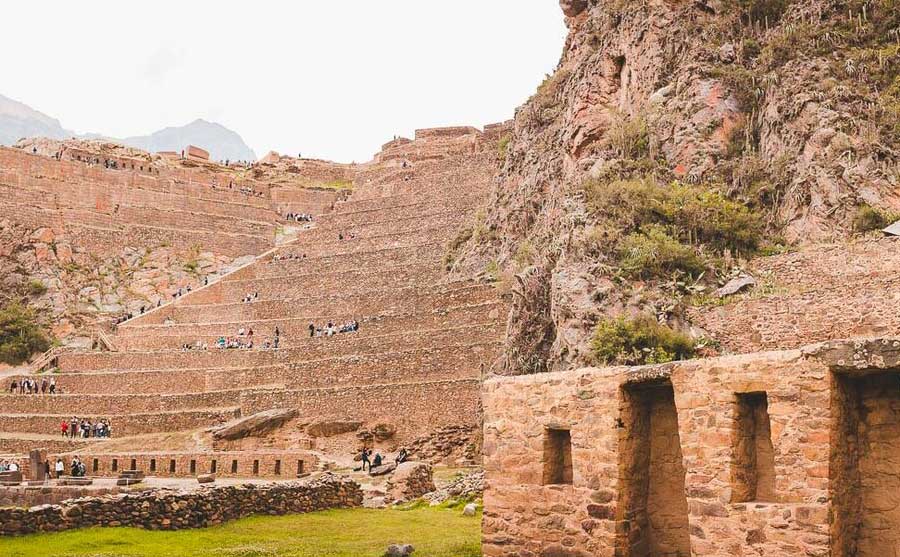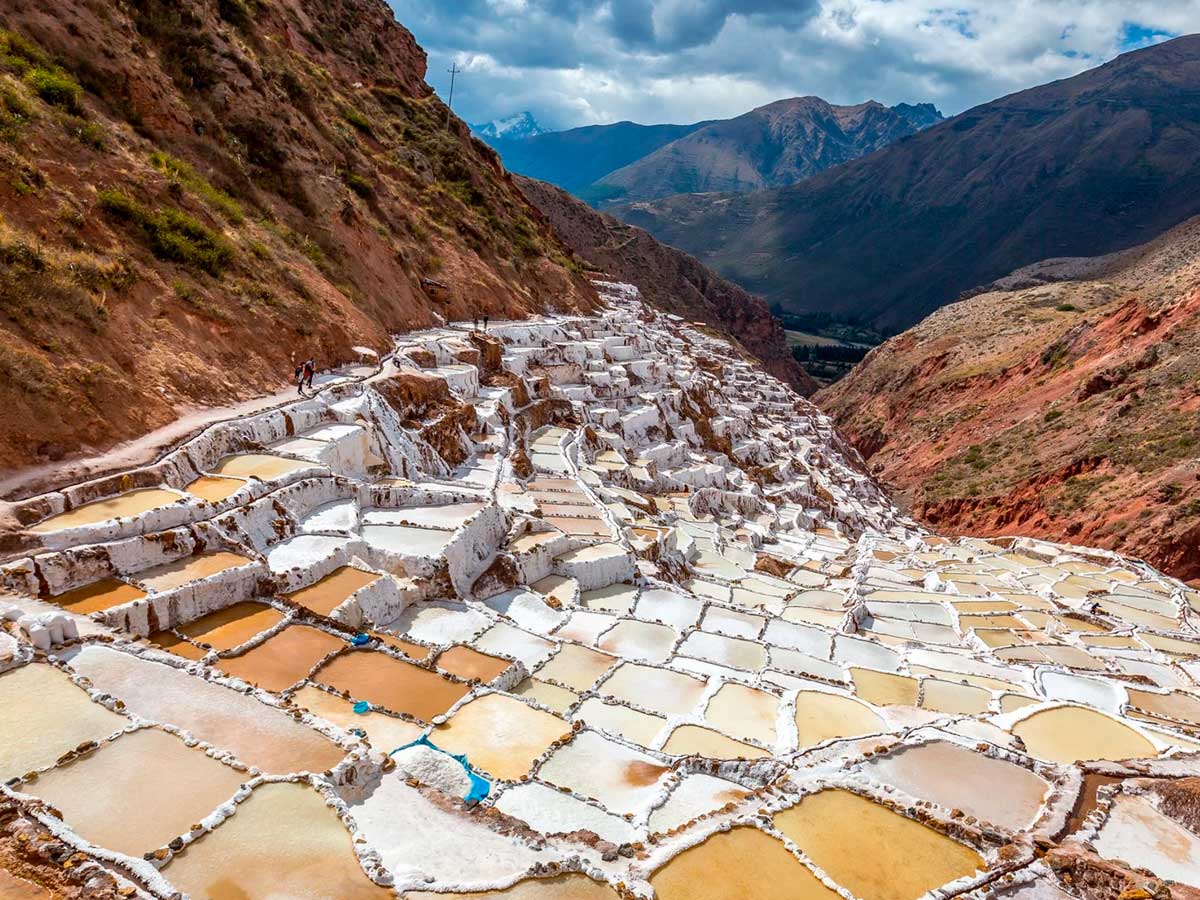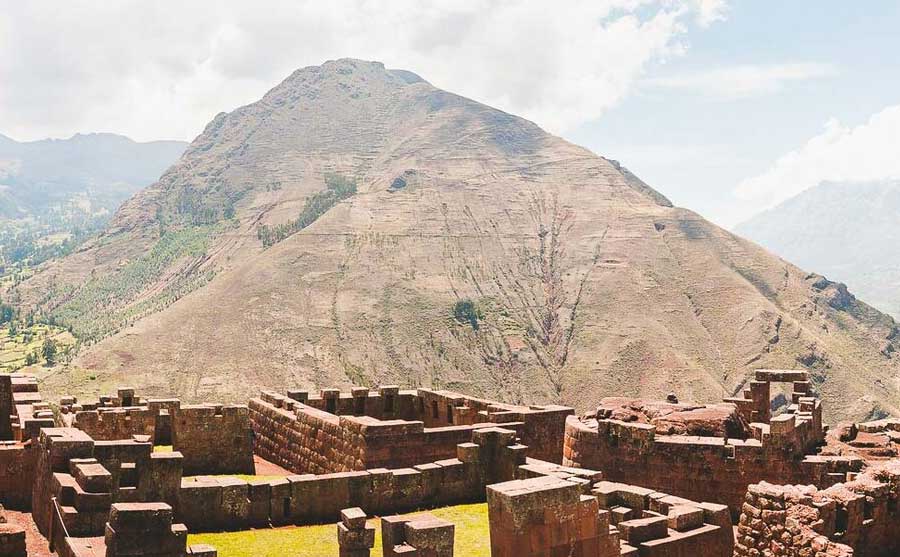
The sacred Valley, Vilcamayo to the Incas, traces its winding, astronishingly beautiful course to the north-west of Cusco, known today as the Urubamba river - Valley of the Spiders - it's still easy to see why the Incas considered this a special place. In the upper sector, the stupendous ruins of Pisac dominate the broad alluvial valley floor: less than an hour by bus from Cusco, this is a site often compared to Machu Picchu in its towering elegance. Further downstream, beyond the ancient villages of Calca, Yucay and Urubamba, the road heads into the mountains at Ollantaytambo, a magnificent little town where a great temple-fortress clings to the sheer cliffs of the valley side. And eventually the valley twists below Machu Picchu itself, the most famous ruins in South America and a place which no matter how jaded you are, and however commercial it may at times seem, can never be a disappointment.
The classic way to arrive at Machu Picchu is from the three - five day hike over the stirring Inca trail, but even if you're not into walking the railway trip from Cusco or Ollantaytambo is a breathtaking experience in itself. Beyond Ollantaytambo the valley closes in around the tracks, the river begins to race, and the route becomes too tortuous for any road to follow.

If, after Machu Picchu, you're tempted to explore further afield, the evening train continues to Chaullay from where you can set out for the remote ruins of vilcabamba - Vitcos and Espiritu Pampa - The refuge of the last rebel Incas, set in superb hiking country. Final destination of this train is the jungle town of Quillabamba, the only amazon town reached by railway in Peru.
By road you can follow the Sacred Valley only as far as Ollantaytambo, from where a back route cuts across the hills (with frequent trucks and buses) to Chaullay and on to Quillabamba. a slower route turns away from the valley ay Calca, crossing a high pass before tracing the river Yanatile down to Kiteni, a small jungle village with access by road to Quillabamba and river routes deeper into the forest along the Urubamba, which here becomes navigable for the first time.
Max. elevation: 3, 000 m
The Sacred Valley, also known as the Urubamba Valley, is a region in the Andes Mountains of Peru, located near the city of Cusco. It is called the "Sacred Valley" because of its historical and spiritual significance to the Inca civilization. The valley stretches from the village of Pisac to the town of Ollantaytambo, following the course of the Urubamba River.
The Sacred Valley was highly revered by the Incas due to its fertile land, mild climate, and strategic location. It was considered a sacred and agricultural center where the Incas grew various crops, including maize (corn), potatoes, quinoa, and more. The valley's rich soil and favorable climate allowed the Inca civilization to flourish and sustain its empire.

Today, the Sacred Valley is a popular destination for tourists visiting Peru. It offers a combination of natural beauty, archaeological sites, traditional Andean villages, and opportunities for outdoor activities. Here are some key features and attractions of the Sacred Valley:
Stunning Landscapes: The valley is characterized by breathtaking landscapes, including towering mountains, terraced fields, lush green valleys, and meandering rivers. It provides a picturesque backdrop for exploration and photography.
Overall, the Sacred Valley is a captivating destination that combines history, culture, and natural splendor. It allows travelers to delve into the legacy of the Inca civilization, experience traditional Andean life, and appreciate the awe-inspiring landscapes that make this region so enchanting.
Cusco, the former capital of the Inca Empire, is a vibrant city in Peru that offers a wealth of cultural, historical, and outdoor activities. Here are some of the top things to do in Cusco:

Explore the Historic Center: Begin your visit by wandering through Cusco's historic center, a UNESCO World Heritage site. Admire the colonial architecture, visit the main square (Plaza de Armas), and explore the narrow cobblestone streets filled with shops, cafes, and vibrant markets.
Visit Sacsayhuaman: Explore the impressive ruins of Sacsayhuaman, an Inca fortress located just outside of Cusco. Marvel at the massive stone walls and enjoy panoramic views of the city below.
Visit the Q'enqo Temple: Explore the unique Inca site of Q'enqo, located just outside of Cuzco. This ancient temple features intricate rock carvings, ceremonial altars, and underground passages.
Explore the San Blas Neighborhood: Wander through the bohemian San Blas neighborhood, known for its narrow streets, artistic atmosphere, and local crafts. Visit the workshops of talented artisans and browse through their handmade jewelry, textiles, and artwork.
Experience Inti Raymi: If you're visiting in late June, don't miss the Inti Raymi festival, the most important Inca celebration. Watch the reenactment of ancient rituals and ceremonies dedicated to the Sun God, with colorful costumes, music, and dance.
Cusco offers a blend of history, culture, and natural beauty that captivates visitors from around the world. Immerse yourself in the ancient traditions, explore the archaeological wonders, and savor the flavors of this fascinating city.